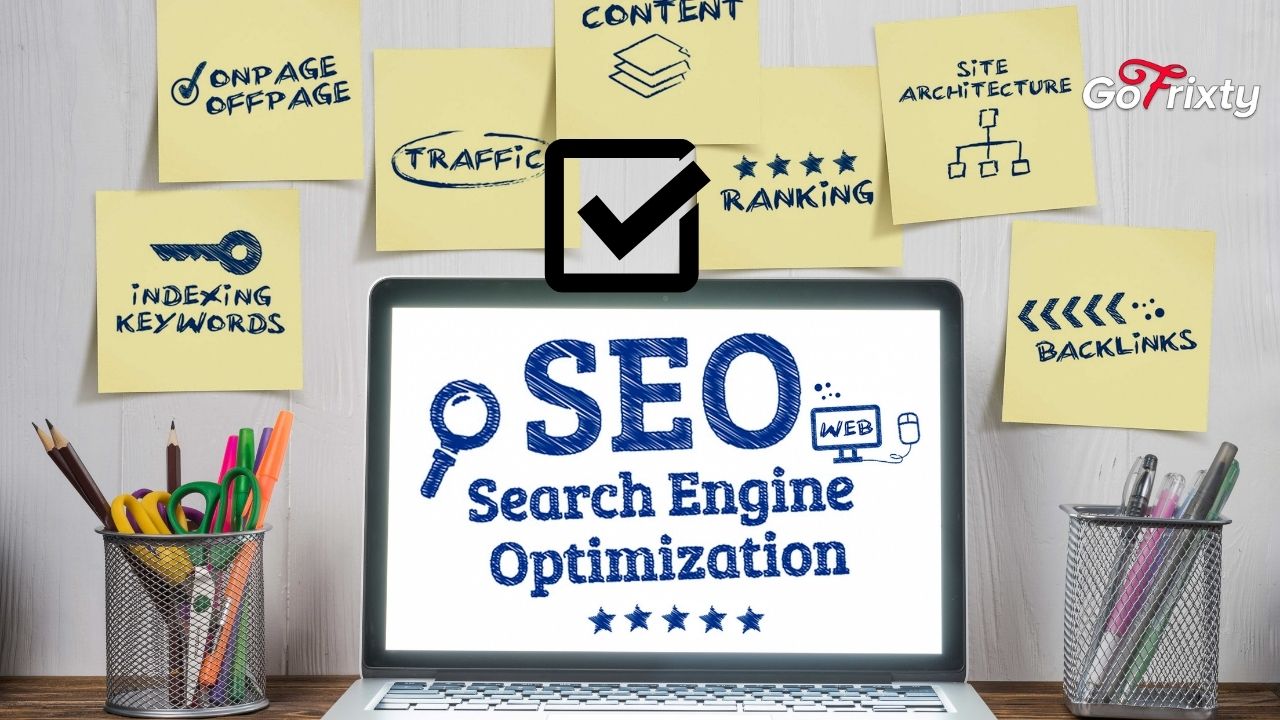There are a lot of moving parts when it comes to SEO, making it difficult for website owners to identify what they need to do to rank higher on search engine results pages. A comprehensive SEO checklist can help alleviate some of that pressure by outlining all of the necessary steps that need to be taken, including on-page optimization, link building, and social media engagement. By following this guide, website owners can put their best foot forward and improve their chances of organic traffic growth.
Article Outline
- Introduction
- On-page optimization
- Technical SEO
- Off-page optimization
- Measuring and tracking SEO success
- Wrap-up
As business owners ourselves, we understand that you’re always looking for ways to improve your website and grow your business. That’s why we’ve put together this complete SEO checklist for website owners to help you improve your website’s visibility and organic search traffic.
SEO is one of the most important marketing channels for any business, and it’s continually changing. Keep up with the latest changes and optimize your website using our checklist!
1. Perform a Website Audit
The first step in improving your website’s SEO is to perform a website audit. This will help you identify any areas of your website that need improvement.
To conduct a website audit, you’ll need to analyze your website’s HTML code, structure, and content. You’ll also want to evaluate your website’s search engine visibility and organic search traffic.
Here are some of the factors you should analyze:
- Page Title Tags
- Meta Descriptions
- H1 Tags
- HTML Code Errors
- Structured Data Markup
- Site Speed and Load Time
- Google Search Console Integration
- SEO Friendly URLs
- Content Quality and Length
- Internal Linking Structure
- External Linking Structure
- Anchor Text
2. Improve Website Structure and Navigation
If your website’s structure and navigation are not optimized, it will be difficult for search engines to index your pages correctly. This can negatively impact your website’s SEO.
To improve your website’s structure and navigation, you’ll need to ensure that your pages are properly linked together. You’ll also want to make sure that your website’s navigation is easy to use.
Here are some tips for improving your website’s structure and navigation:
- Create a sitemap and submit it to Google Search Console.
- Ensure that your pages are properly linked together.
- Use breadcrumbs to help visitors navigate your website.
- Make sure your navigation is easy to use.
3. Optimize Page Titles and Meta Descriptions
Page titles and meta descriptions are two of the most important on-page SEO factors. They help search engines understand what your page is about, and they also influence how your page appears in search engine results.
To optimize your page titles and meta descriptions, make sure they are:
- Relevant to the page’s content
- Informative and interesting to potential visitors
- In line with other pages on your site
- Limited to 120 characters (including spaces) for page titles, and 255 characters for meta descriptions
4. Optimize Images for SEO
Images can also help improve your SEO performance. To optimize your images for SEO:
- Use keywords in the file name and alt text of your images.
- Ensure that your images are properly sized and cropped. Large images can slow down your website, and improperly cropped images can look bad and confuse users.
- Make sure that all of your images are compressed. uncompressed images can significantly slow down your website.
5. Add Social Media Sharing Buttons to Your Pages
Social media sharing buttons make it easy for people to share your content on their social media profiles, which can help you reach a larger audience. To add social media sharing buttons to your pages, use a plugin such as AddThis or Jetpack, or use the social media sharing buttons provided by your social media networks.
6. Optimize Your Pages for Search Engines
Optimizing your pages for search engines can help you reach a larger audience and drive more traffic to your website. To optimize your pages for search engines, include keywords in your page titles and descriptions, and use relevant anchor text for links. You can also use plugins such as Yoast SEO to help you optimize your pages.
7. Include Calls to Action on Your Pages
Calls to action can encourage people to take action, such as subscribing to your email list or clicking through to another page on your website. To include calls to action on your pages, use concise and attention-grabbing text, and place them near relevant elements such as images or buttons. You can also use plugins such as WPForms to create forms that encourage people to take action. If you’re still confused and not able to do all this stuff yourself, you can approach the best digital marketing agency OR avail SEO services for your website for efficient and effective performance.
Keep Reading:
- Software Development Lifecycle (SDLC)
- Top 5 Social bookmarking Websites for Free | MUST for every marketer
Conclusion
SEO is a complex and ever-changing field, and it can be tough to keep up with all the changes. That’s why we’ve put together this comprehensive SEO checklist for website owners. By following these tips, you can help your website rank higher in search engine results pages and attract more visitors.
Blogging is a great way to increase website traffic, but it’s not the only way. In order to get the most out of your website, it’s important to make sure you’re doing everything possible to optimize it for search engines. In this article, we’ve put together a complete SEO checklist for website owners. We hope you find it helpful! If you have any questions, please don’t hesitate to reach out to us by following our social media pages.




